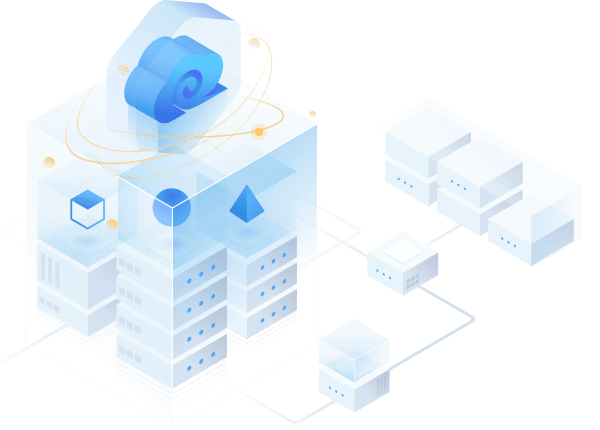DDI Solutions for Government
Secure, Intelligent, Sovereign DDI for Digital Government – enabling digital transformation and modernized governance through deep technological integration.
As "Digital Government" initiatives advance, public services are increasingly moving online, requiring seamless integration across departments to enable data sharing and unified operations. Key challenges include:
Government domain names and IP addresses are managed in a fragmented way across departments, creating operational inefficiencies and weak disaster recovery capabilities.
The lack of intelligent traffic routing and rapid failover mechanisms in multi-data center environments compromises service availability.
DNS services remain vulnerable to DDoS attacks and hijacking, while outdated security systems cannot effectively defend against modern attack methods.
Dependence on foreign or open-source technologies poses security and supply chain risks. There is a growing need for homegrown, secure solutions to ensure long-term operational independence.
Designed for government needs, this solution focuses on "centralized management, security, and intelligent collaboration" to deliver a unified DDI service covering networks, and multi-data center environments. It helps achieve the following objectives:
Supports domain-based application access instead of static IP dependencies, enabling flexible interoperability between departments and facilitating integrated online public services.
Integrates fragmented domain name and IP address resources into a centralized, visual management platform, simplifying operations across different administrative levels and regions.
Combines threat intelligence, DNSSEC validation, and real-time malicious domain blocking to establish full-chain security covering resolution, transmission, and access.
Provides a scalable and secure infrastructure that is compatible with required domestic technologies for the government.

In "two-site, three-center" or multi-site architectures, intelligent DNS resolution dynamically monitors service health and link load to optimize resource allocation. Leveraging nationwide data center nodes, it enables cross-regional access and rapid disaster recovery, ensuring continuous operation of government services.

Shifts government applications from IP-dependent to domain-based access, improving interoperability. Domain transformation and intelligent routing enable precise traffic steering across government cloud data centers, enhancing failover efficiency and supporting cross-department data sharing.

In external e-government networks, DNS security and multi-layered threat monitoring defend against DDoS attacks and unauthorized access. Combined with intelligent DNS and cloud-based traffic filtering, it blocks 99% of malicious traffic, ensuring the stable operation of unified online service platforms.

Deploys sovereign DNS software and hardware to meet autonomy requirements. A coordinated cloud-edge DNS cluster ensures compatibility with domestic ecosystems, delivering high availability and zero-trust security for government external resolution services.
Intelligent traffic routing and domain-based modernization improve cross-departmental interoperability, enabling unified online service platforms to achieve quick response time.
A full-chain protection system from DNS resolution to endpoint access reduces risks of DNS hijacking and data leakage, ensuring compliance with China's Cybersecurity Law and Multi-Level Protection Scheme (MLPS) requirements.
The unified management platform enables full lifecycle visibility and management of domain names and IP addresses, reducing operational workload and promoting efficient utilization of government IT resources.
Provides a sovereign, controllable network foundation for IPv6 deployment and government cloud platforms, accelerating the adoption of approved domestic technologies in digital government initiatives.
Multi-data center disaster recovery capabilities with second-level failover ensure zero service interruption during extreme scenarios, strengthening government credibility and emergency response capabilities.
